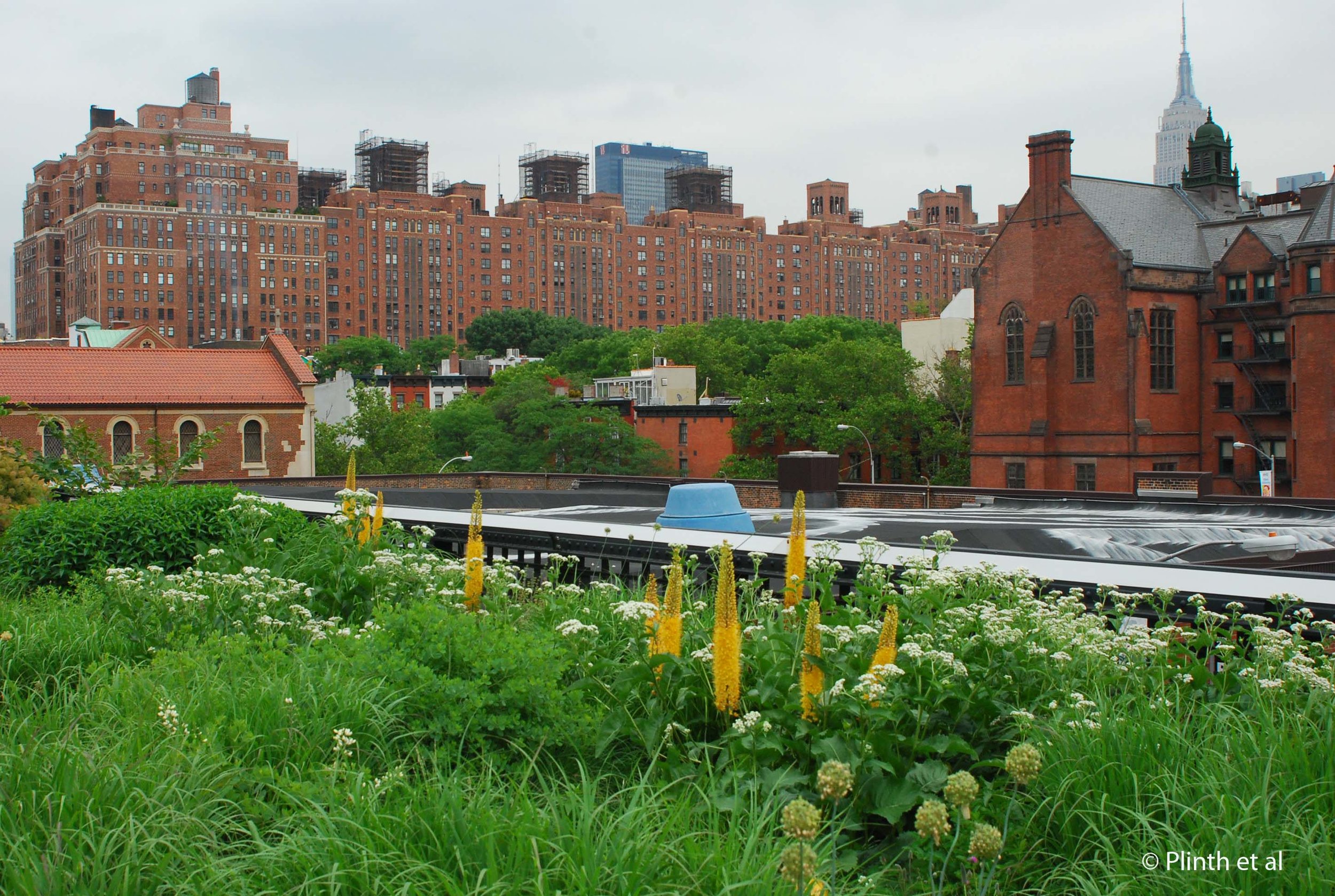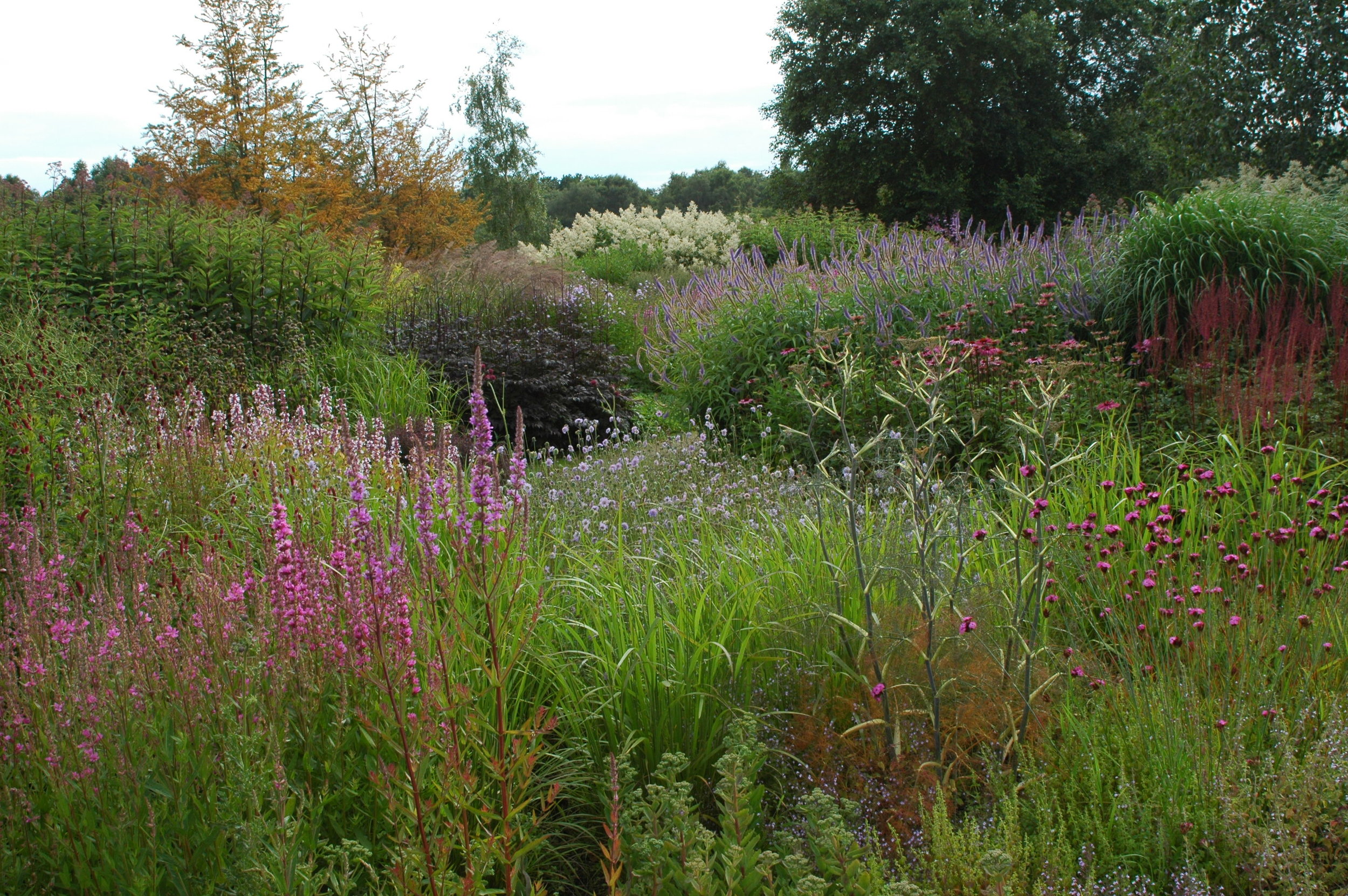Published in 1870 (reprinted at least seven times), William Robinson’s The Wild Garden is considered the seminal work for promoting a naturalistic and low maintenance gardening style when subtropical gardening and herbaceous borders, whilst attractive, were labor intensive. Robinson’s horticultural experience in Ireland and England gave the book credibility and his North American trip, which provided firsthand observations of the plants and their ecosystems, complemented his knowledge of the English flora and undoubtedly enhanced the book’s subsequent editions. The Garden, his weekly periodical started in 1871, became a ‘salon’ for some of the forward thinking botanists and horticulturists. The timing of The Wild Garden fortuitously coincided with the Arts and Crafts movement, which called for utilitarian beauty and local craftsmanship, and the book’s philosophy gained significant momentum through Robinson’s friend Gertrude Jekyll who enthusiastically incorporated elements in her gardens. The Wild Garden’s influence spread beyond the British Isles to continental Europe, especially Germany where the landscape designer Willy Lange advocated Naturgarten (nature garden) in his various works (Gartengestaltung der Neuzeit (1907); Land- und Gartensiedlungen (1910), and Der Garten und seine Bepflanzung (1913). When one compares the naturalistic approach with that of contemporary planting design, it is difficult to believe that The Wild Garden was revolutionary for its time. Will there another groundbreaking work like The Wild Garden? The cyclical nature of garden design suggests otherwise, and the best hope lies in an interpretation neither overly derivative nor alien. Increasingly that interpretation is rationalizing the aesthetics of planting design with modern ecological and scientific reasoning, and its torchbearer has been the British garden ecologist and writer Noel Kingsbury.
In a way, Noel Kingsbury is not too far from William Robinson. Like Robinson, he draws from his experience and knowledge as a gardener (his garden at Montpelier Cottage is his laboratory), and his overseas exposure and connections with the leading luminaries of the ‘naturalistic’ gardening style. Robinson's editorial and writing prowess probably will not be matched, but Noel has been a prolific writer whose publications are hard to escape. Just as William Robinson’s philosophy benefited from Gertrude Jekyll’s designs, Kingsbury’s ethos has grown through Piet Oudolf’s international fame and photogenic gardens. Chronicling Oudolf’s work gave Kingsbury impetus to explore context of ecological design within the international arena. Planting: A New Perspective is a distillation of ‘Designing with Plants’ and ‘Planting Design: Gardens in Time and Space’, Noel’s PhD dissertation on perennial longevity and ecological relationships, and the school of ‘naturalistic style’ practitioners.
Not surprisingly, grasses and late seasonal perennials, pivotal to the school of naturalistic planting, are the focus. The dreamy photographs of them especially in Oudolf’s work are enough to convert naysayers, encouraging their inclusion in temperate gardens worldwide. A high proportion of the grasses and perennials are North American in origin, and they had been long popular with European gardeners. Because they often come from prairie or meadow habitats, their use in naturalistic plantings is hardly coincidental.
The progression of Oudolf's style from being painterly to randomized is noticeable. Pensthorpe, his first overseas commission, beautifully played off blocks of plants in the Norfolk Broads, which are characteristically flat like the Dutch landscape. The textural and color ebbs and flows were simultaneously subtle and bold and the low evening light during my visit magnified that contrast especially when the grasses were backlit. These masses soon became a signature mark for Oudolf elsewhere in United Kingdom and continental Europe. Molinia caerulea ‘Poul Petersen’ accentuates the sinuous bed outlines at Scampston Hall, UK, and the waves of Salvia nemorosa cultivars wash across the Lurie Garden, Chicago, US, and Enkoping Dream Park, Sweden. Increasingly his plantings seem freer and looser, more emblematic of the wild habitats that inspired Oudolf. Nowhere to be found in the High Line and the recent garden on the former nursery site at his private garden Hummelo are block-like masses, supplanted by repetitive mosaic-like patterns.
Noel is less inclined to deploy blocks at his garden at Montpelier Cottage, and if any effect does exist, the resultant look is rather diffuse. It is a look that may lack the immediate romantic effect of Piet Oudolf's gardens and traditional ones. To the untrained eye, Noel's style can appear 'weedy' or 'disheveled'. There is no regular regime of dividing, double-digging, and staking as it befits the grand herbaceous border. Plants must duke it once the initial phase of planting and establishment has been completed. Regardless Montpelier Cottage has been a fertile experimental field for perennial habit and longevity.
The chapter on perennial longevity and survival is illuminating because it adds an overlooked ecological slant on establishing and maintaining plantings, as well as visual expectancy, relative to individual components. Fibrous root systems indicate higher likelihoods of short lifespans. Oudolf and Kingsbury are careful to disabuse the notion of short-lived plants where speed of establishment is concerned; some long-lived perennials produce growth highly vulnerable in their youth since their initial resources are devoted to maximizing their root systems. Many a young plant may have failed in established gardens likely to this oversight.
In another chapter, other practitioners of the naturalistic style are accorded their recognition and their approaches, some of which markedly different from Oudolf, are interesting. Kingsbury pays considerable nod to his former thesis supervisors at Sheffield Dr. James Hitchmough and Dr. Nigel Dunnett whose work on developing new naturalistic plant communities can be best witnessed in Olympic Park, London. Hitchmough and Dunnett have published Dynamic Landscapes, which brings a scientific angle to the ecological landscapes and the lack of glossy photographs makes clear who their book’s audience is. Anyone who has seen their Olympic Park meadows can attest their work’s validity. Nor are his continental European and North American compatriots overlooked. Germans may be well known for their perennial introductions, but they too excel in designing public spaces. Of these public spaces, Hermannshof is favorably regarded and its exemplary planting design of Cassian Schmidt and head gardener Till Hofman is reviewed. Curiously the work of Wolfgang Oehme and James van Sweden hardly receives attention. The same can be said for Keith Wiley whose On the wild side: experiments in new naturalism (2004) offers a similar riff on naturalistic plantings as Planting: A New Perspective does.
Low maintenance has been misleadingly applied to naturalistic gardens - while the human input is nowhere as high as that for herbaceous borders and rock gardens, these gardens still require monitoring as far as editing and replanting goes. Deschampsia cespitosa can be short-lived in fertile soils, and Miscanthus can be monstrous liabilities to divide (recounting personal experiences of ‘broken spades and pick axes’). Echinacea and their hybrids have uncertain longevity, a common complaint among gardeners here in U.S. and U.K. that at least Oudolf and Kingsbury recognize. Self-seeding can be either a curse or blessing— at some point, too much Angelica gigas and Verbena bonariensis is possible. Regardless of the planting style, the balance between competition and chaos must be heeded in the garden.
As resilient as grasses are against weather elements, their soggy selves may become visual liabilities in the wet and grey UK summers. The chief beauty of grasses is their backlit luminosity in sunlight and their kinetic liveliness. Better suited are woody plants, which do not necessarily win plaudits in Planting: A New Perspective. Piet Oudolf and Noel Kingsbury are dismissive of roses, criticizing their poor structure, their garden monoculture, and their incompatibility with grasses and late seasonal perennials. Perhaps their failings are grossly overstated for roses, if properly selected, can offer interesting hips and autumnal foliage. For instance, Rosa x odorata ‘Mutabilis’ can hold its own against the bleached awns of Stipa gigantea and the crimson flagon-like hips of Rosa moyesii ‘Geranium’ look winningly explosive among asters, Persicaria amplexicaulis, and veronicastrums. Despite being praised for their scented flowers, Deutzia and Philadelphus lose points for their unremarkable foliage. Take away the clipped hedges and trees in the book’s photographs, and then the plantings can appear flat or one-dimensional. The High Line plantings benefit from the adjacent NYC buildings and the few shrubs, such as Cotinus coggygria and Rhus typhina. For all the appeal of grasses and herbaceous perennials, nothing is attractive about the unshorn look of collapsing stems and seedheads towards winter’s end. Before bulbs and perennials appear in early spring, woody plants can give the garden structural integrity. Ironically the asymmetical yew hedges at Hummelo, long gone, became iconic in contemporary garden design.
Reactions towards Planting: A New Perspective has been mixed. The Financial Times garden columnist Robin Lane Fox respectfully recommends the book to his readers, but not before pointing out the fallacies of the planting style and the unspeakable omission of favourite (somewhat biased) garden plants like peonies and lupines. Thomas Rainier, the landscape architect blogger, finds the two authors’ voices dissonant and the resultant book a praiseworthy odd mix of Oudolf’s visual catalogue and Kingsbury’s manifesto of the new planting style. Some readers question the effectiveness of such naturalistic plantings on a small scale, given their prominence in large-scale public spaces and landscapes. I remember one head gardener of a very famous British garden express her misgivings about the overemphasis on grasses especially in the damp climate: "Grasses can be really messy during winter. Our damp climate isn't the same as continental Europe where you got those misty frosty vignettes of grasses."
Like food and fashion, gardening styles will always have their admirers and detractors, and there is no question that naturalistic planting is here to stay. On his blog (www.noels-garden.blogspot.com), Kingsbury states the aim of Planting: A New Perspective: "Our book is addressed to all gardeners and designers of planted spaces: private gardeners, community gardeners, volunteer gardeners, professional gardeners, and of course landscape designers. It is about trying to communicate a vision of nature which may be small-scale and private or big-scale and public."





